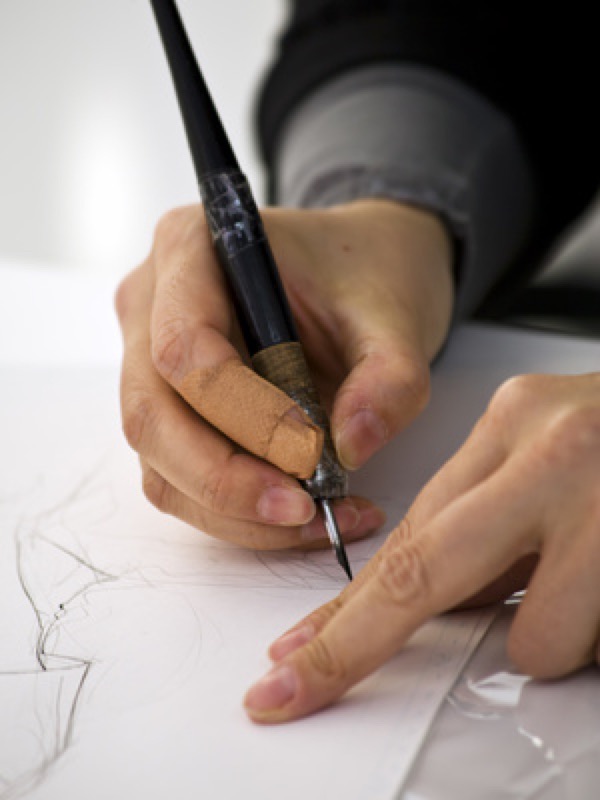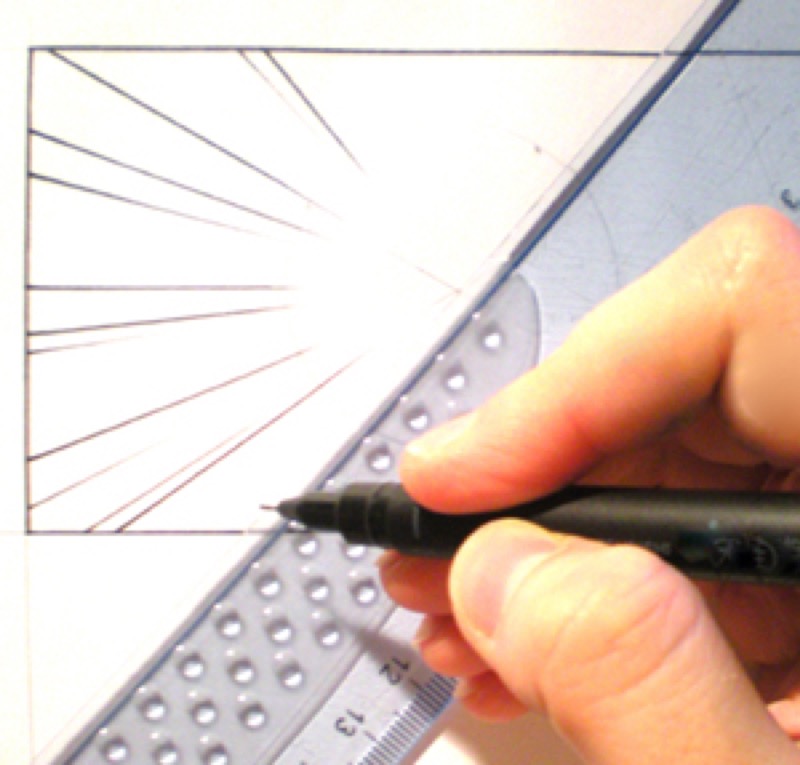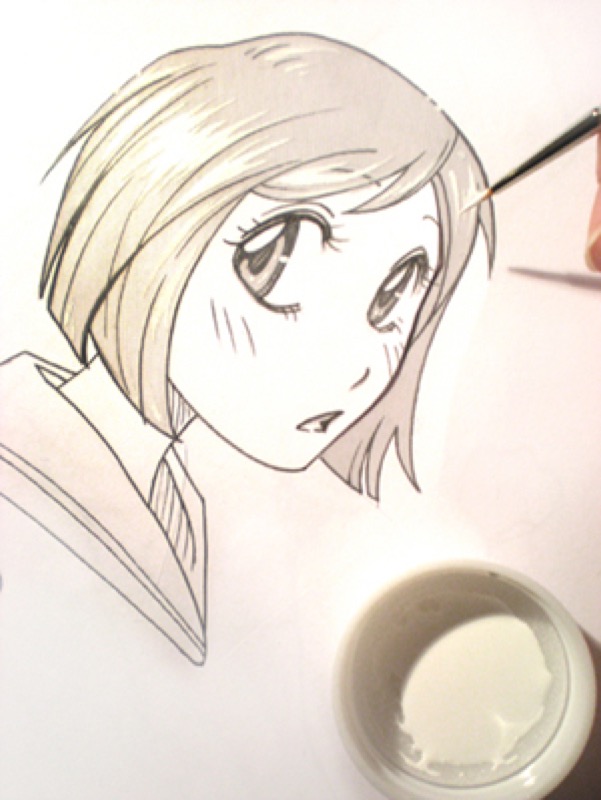As a mangaka, you need to have precision tools for everything from your first draft to inking!
1. Leads
Acquire several kinds of pencils and mechanical pencils for pencil sketching.
Mechanical pencils: for precision work
Mechanical pencils, such as Criterium drafting pencils, have sharp points that won't blunt. They're perfect for meticulously creating a setting!
Make your lines thinner or thicker by changing the diameter of your leads: from 0.3 to 2 mm.
Paper pencils: should they hard or soft leads?
For drawing features that need less precision, a normal pencil is better than a mechanical drafting pencil. There is little variation between lead diameters (2.5 mm) from one pencil to another, so it is the degree of hardness that counts.
Pencils with hard leads (H, H2) produce clean, precise lines. Use a light touch with them: otherwise, you might leave marks on the paper that the printing will pick up.
HB pencils (neither hard nor soft): ideal for drawing the soft contours of faces.
Pencils with softer leads (B, B2) are used for shading.
Don't forget to have a pencil sharpener on hand!

Memo: Blue pencils
Use them for drawing all your reference lines: they won't show when printing. They’re better than a blue ball-point pen because you can erase your mistakes!

2. Pen nibs and pens holders
These are a mangaka's favorite tools. For real pro inking, that's exactly the pen you need!
Pen holders: ergonomics comes first!
It has to fit your hand perfectly: it's essential for a good line. Try out several models before making your selection.
Should it be metal, wood or plastic? It's six of one, half a dozen of the other. There's just one difference: the price! What's important is your comfort.
Some advice
For extended drawing, add to your comfort with a rubber grip on the part of your pen holder where you place your fingers.
Pen holders can be used with any shape nib… with just one exception: nibs with a round base require a special pen holder with a reservoir.
The various kinds of nibs: every nib has its own line
G Nib: it has a conical shape and a fairly thick line. Mangakas like it for its flexibility. Ideal for first inking.
Round (or Maru "circle") Nib: it is reserved for narrow lines and details. Be careful not to press down too hard or you'll scratch your paper!
Turnip (Kabura) Nib: they make extremely regular lines.
Trick of the trade: Slowing ink flow
Heat your nib over the flame of a cigarette lighter or candle (make it doesn't touch the flame so it doesn't burn), it will hold the ink better and flow more slowly.

3. Markers and other pens
The great mangaka are using markers and ball points more and more, alone or with traditional pens.
The wide marker: ideal for creating large blocks. Note: ink will go right through low grammage paper.
The paint brush marker or paint brush pen: it has a synthetic fiber tip for an elegant line, worthy of a real paint brush. A must for drawing hair.
The rapidograph: an ultra fine point pen (0.25 mm) for making extremely precise lines. Use for drawing box contours.
4. Paintbrushes
Whether doing a retouch or a full inking, painting with a brush requires a good mastery of drawing. Just one piece of advice: practice until you feel completely comfortable!
Choose very fine sable hair brushes.
5. Inks
How can you tell a high quality ink?
Do a test: apply a little ink on paper with a fine paint brush. The painted surface should be homogenous and pure black (not tending towards gray, like faded jeans).
Traditional inks
India ink is the blackest of the black inks. It is water soluble, which implies fairly slow drying. It is very hard to remove, even with an eraser.
Drawing ink is also water soluble, but dries faster than India ink. It is easy to remove with an eraser.
industrial ink is completely waterproof. The advantage: it doesn't spoil as readily and keeps longer. you can remove it with an eraser.
Special inks
IC Comic Super Black is, as its name indicates, a very black ink. When applied to paper, it is matte. It dries very fast! Make sure to clean your pens regularly when working with it. It cannot be removed with an eraser.
Kuretake Manga Black is a special Japanese manga ink. Its black color is just as pure as India ink. However, it is waterproof and dries very quickly.

6. White
Retouching, correcting and creating effects… white ink is just as basic as black!
Opaque white comes in a bottle. Because it is fluid, its "packaged" effect is limited.
White correction fluid: it comes in a bottle with a little brush applicator, and as a pen. It is recommended for fixing details and for adding reflections to eyes.
Its white ink is water soluble and is applied with a fine paint brush. It is easier to use than white correction fluid.
Recommended product:
Graduate Bristol
See also :
Manga
Manga: Drawing hair
